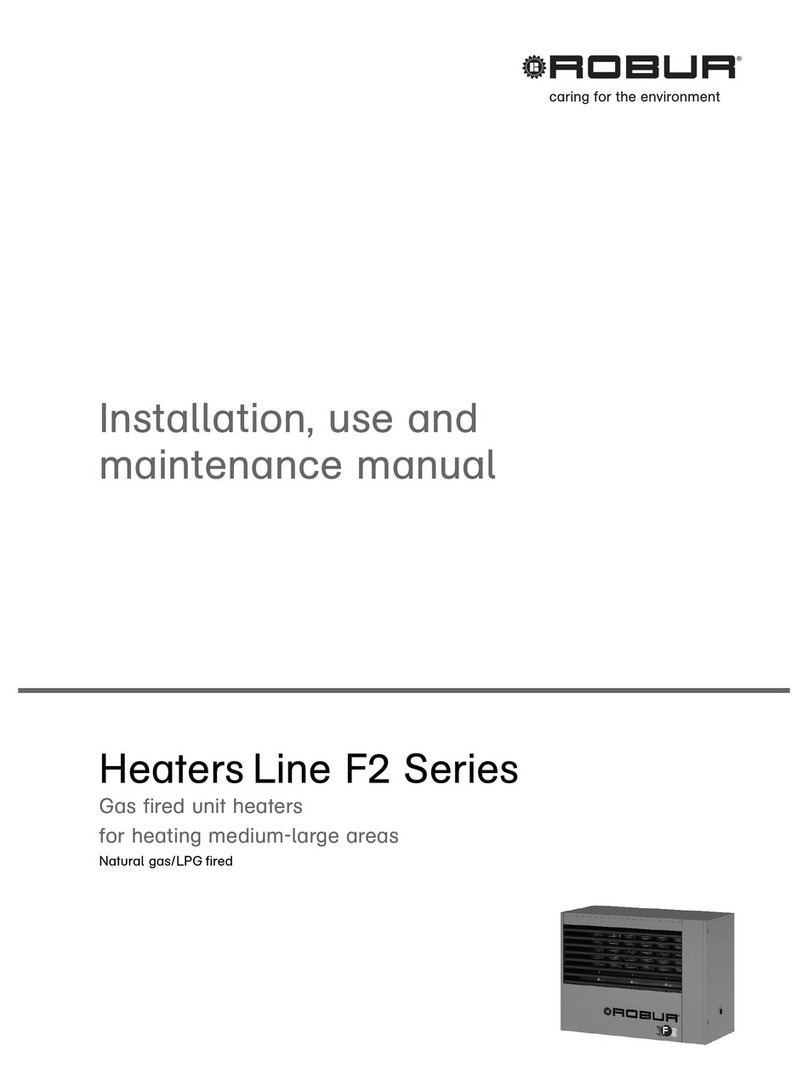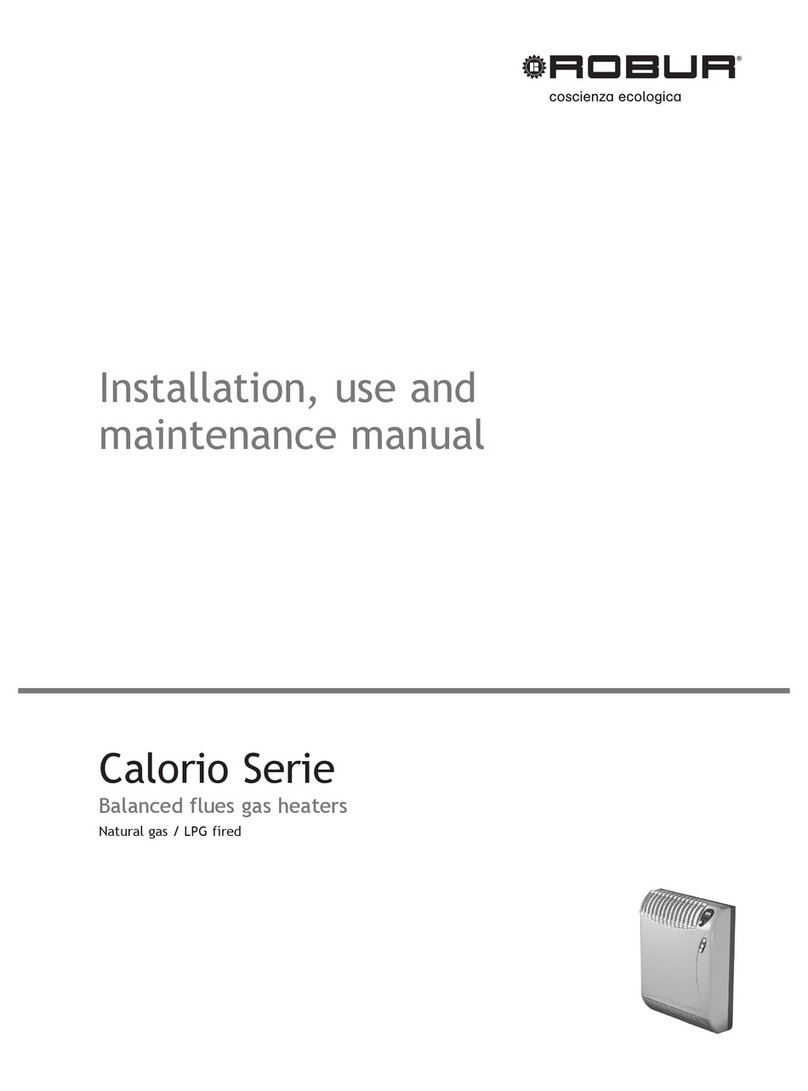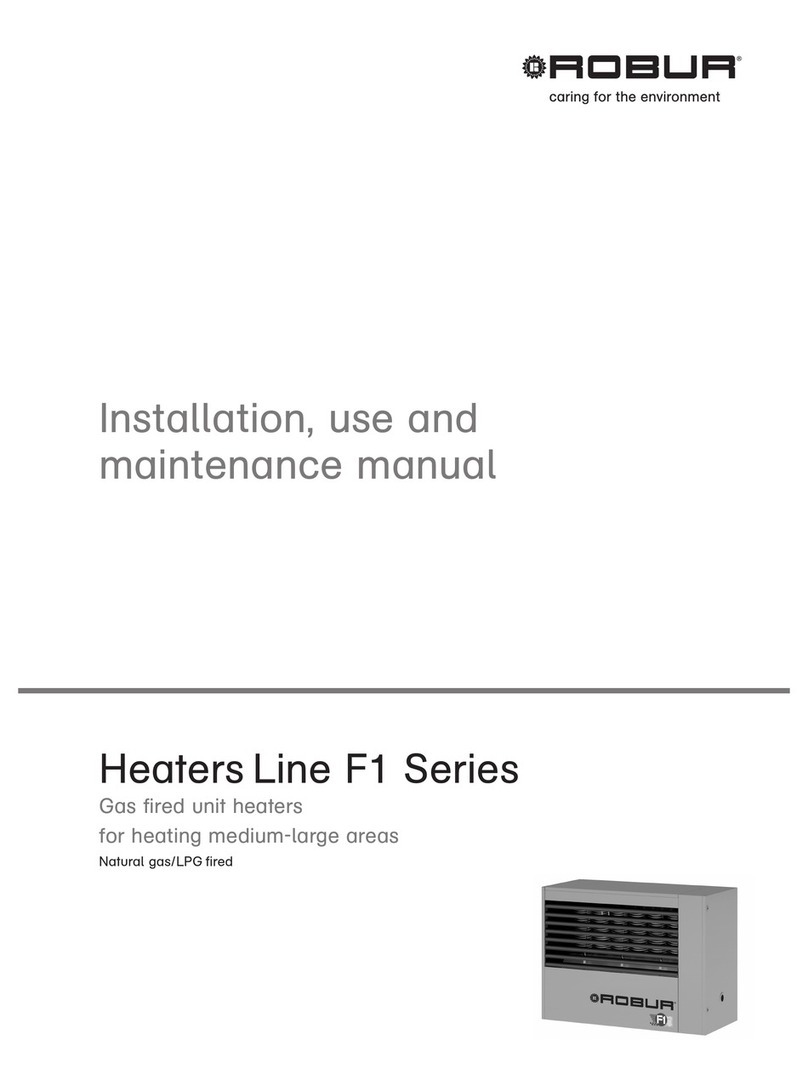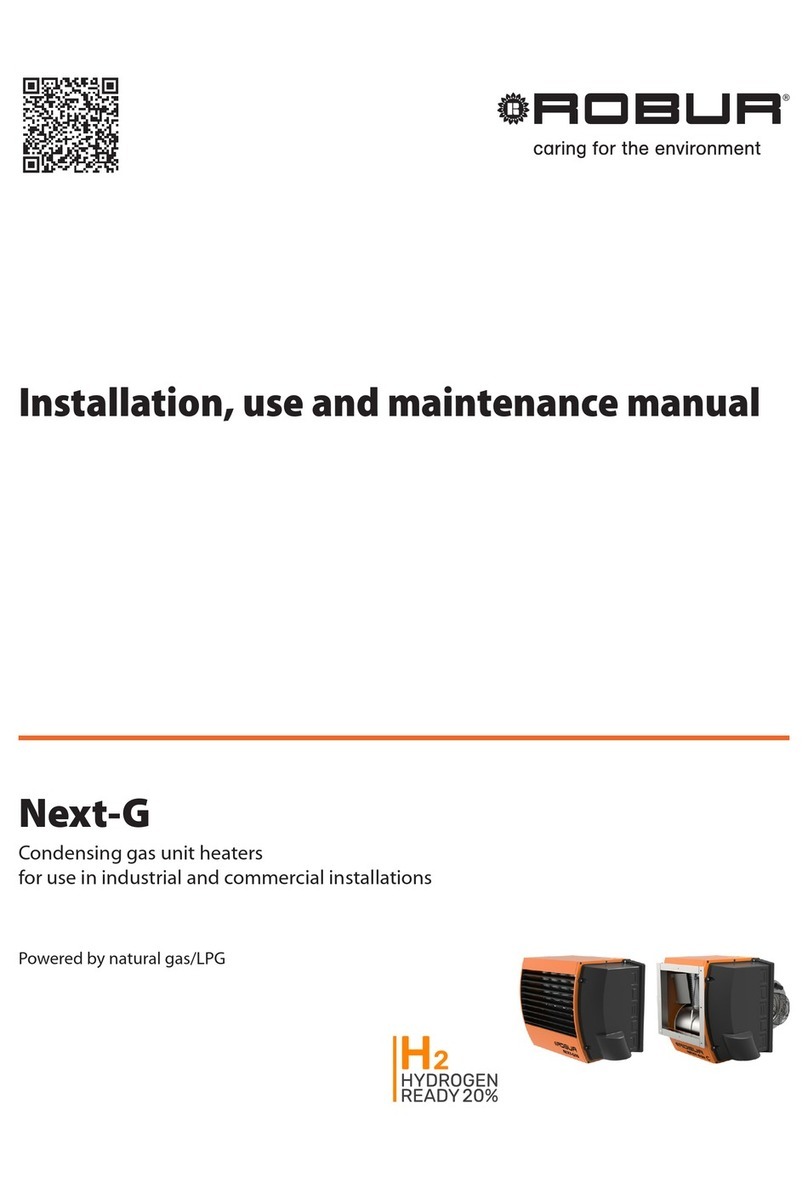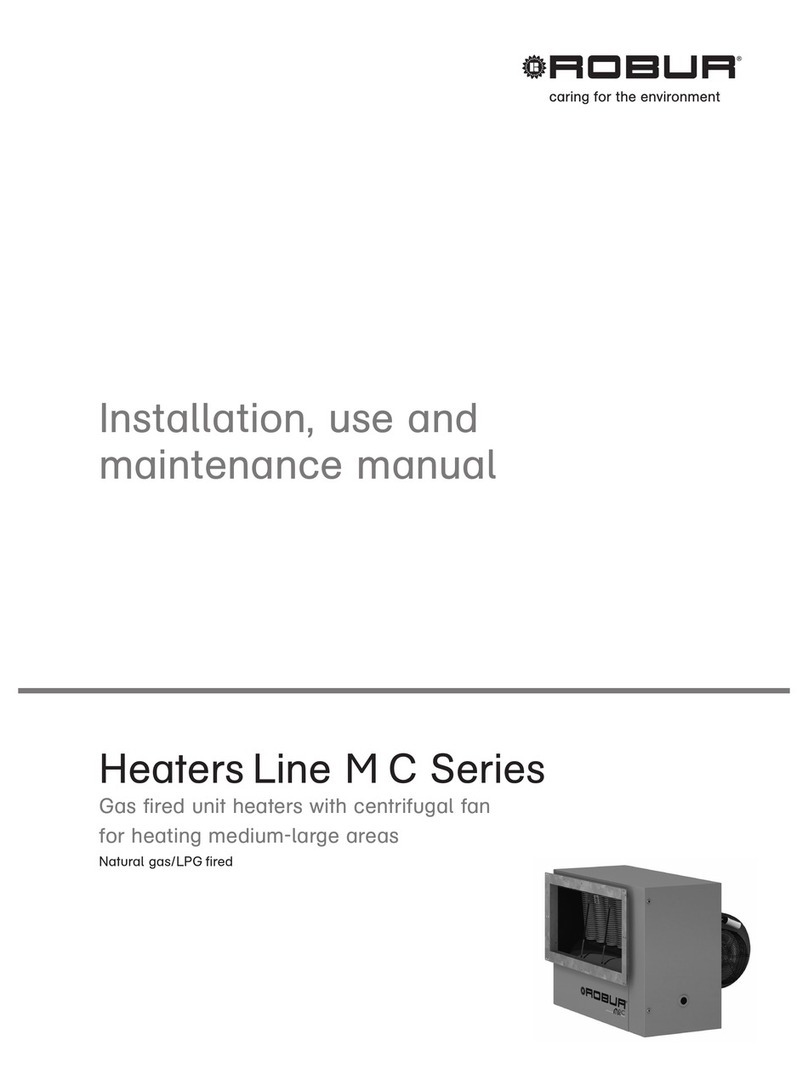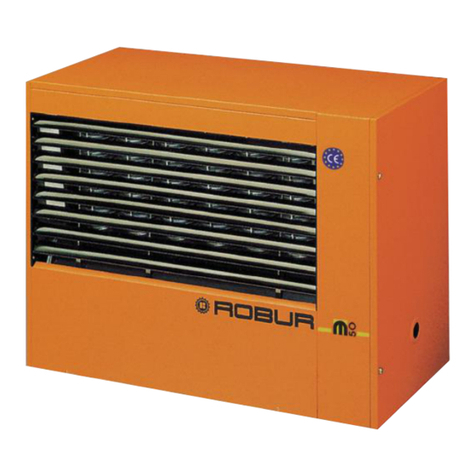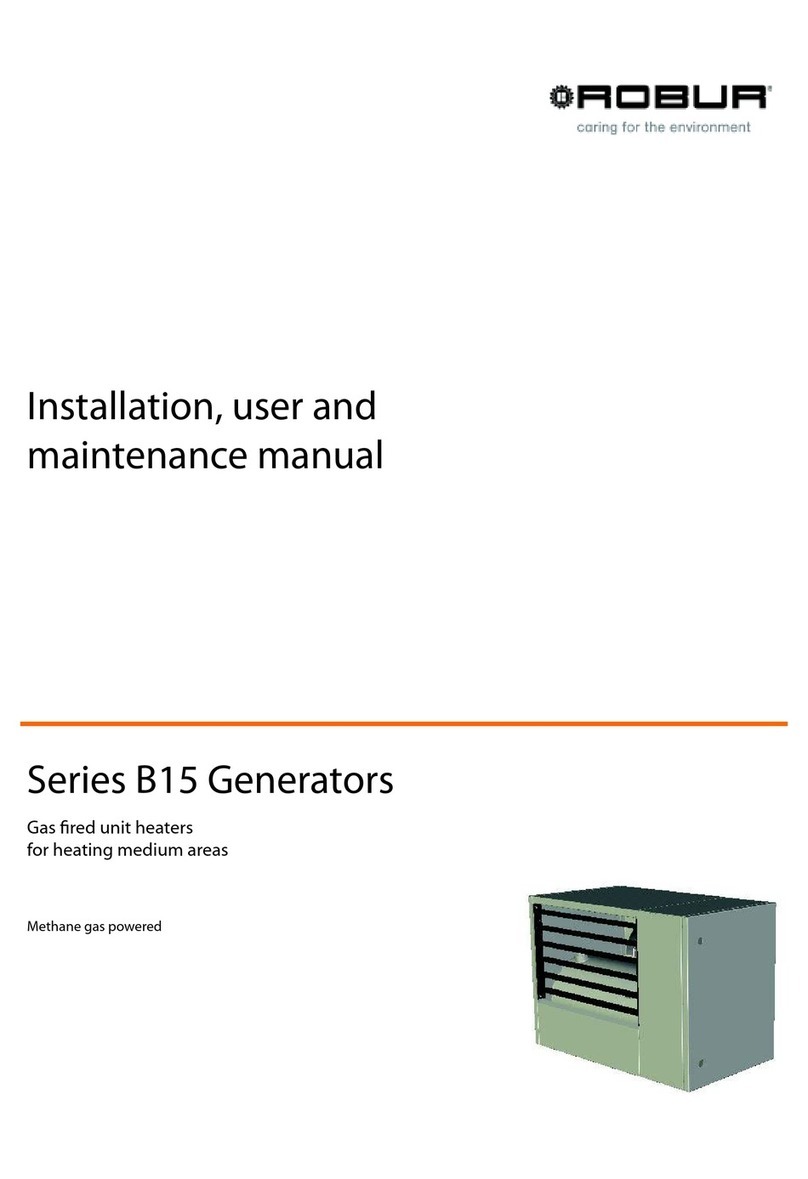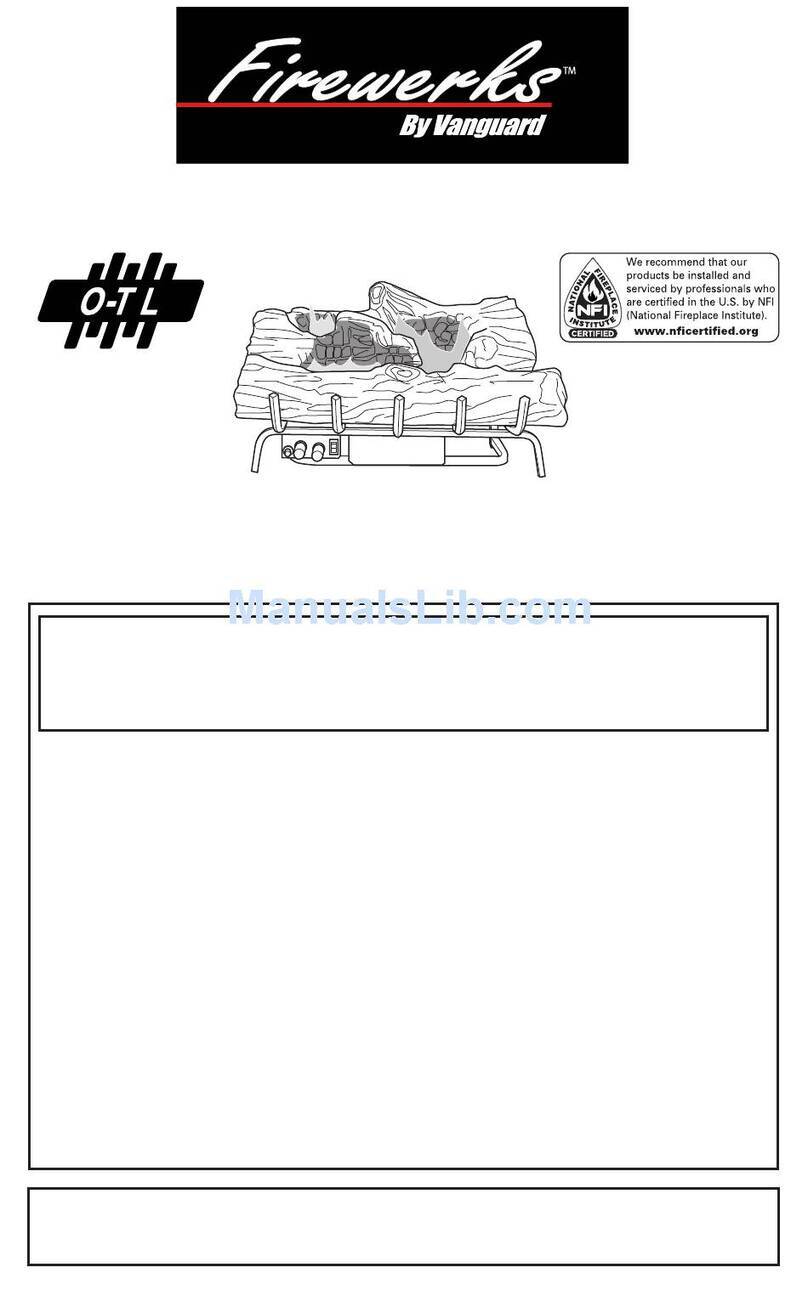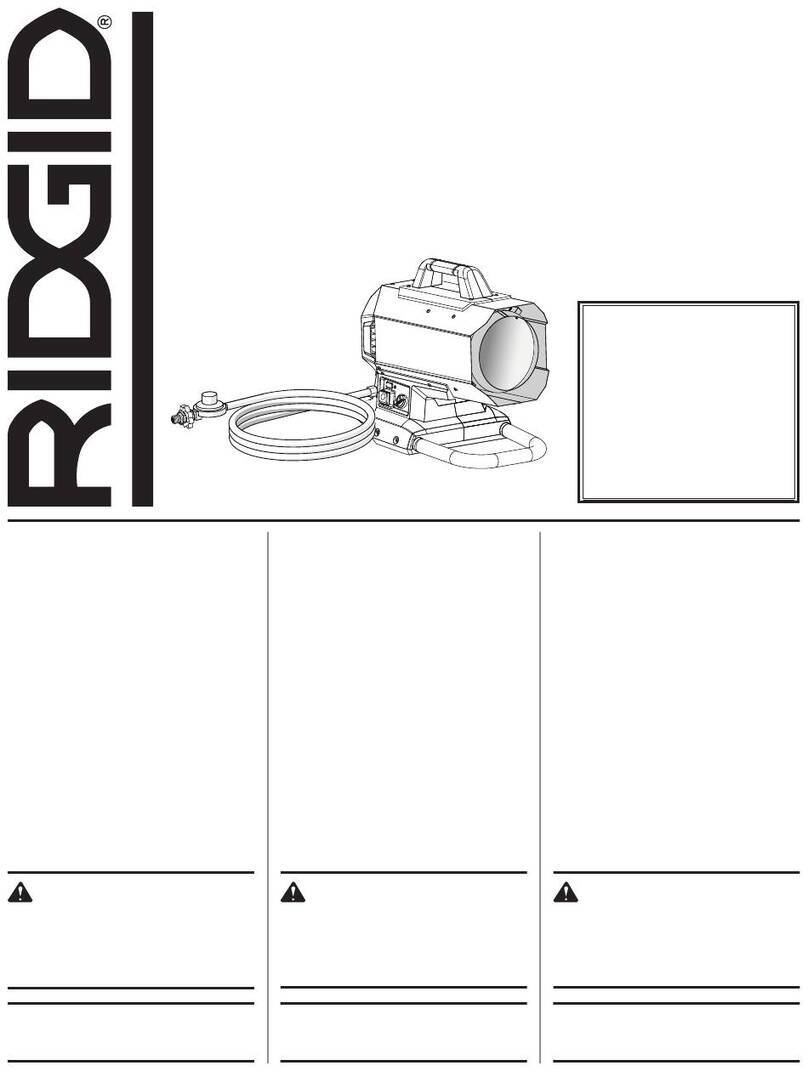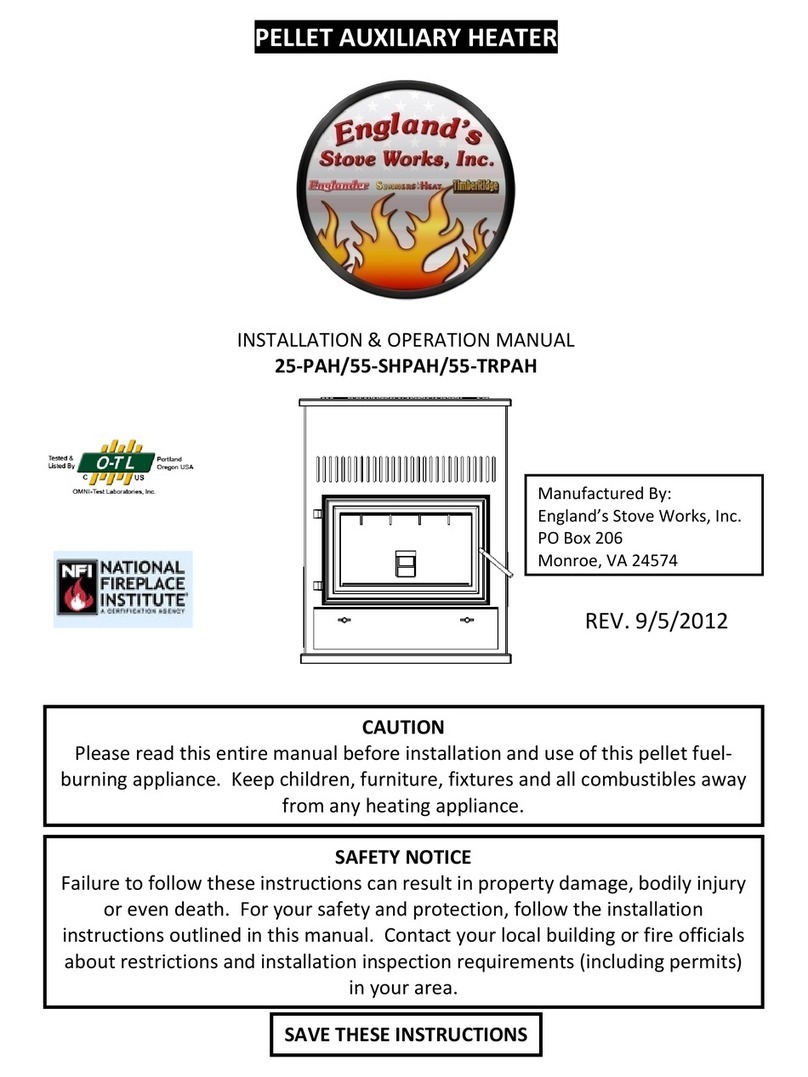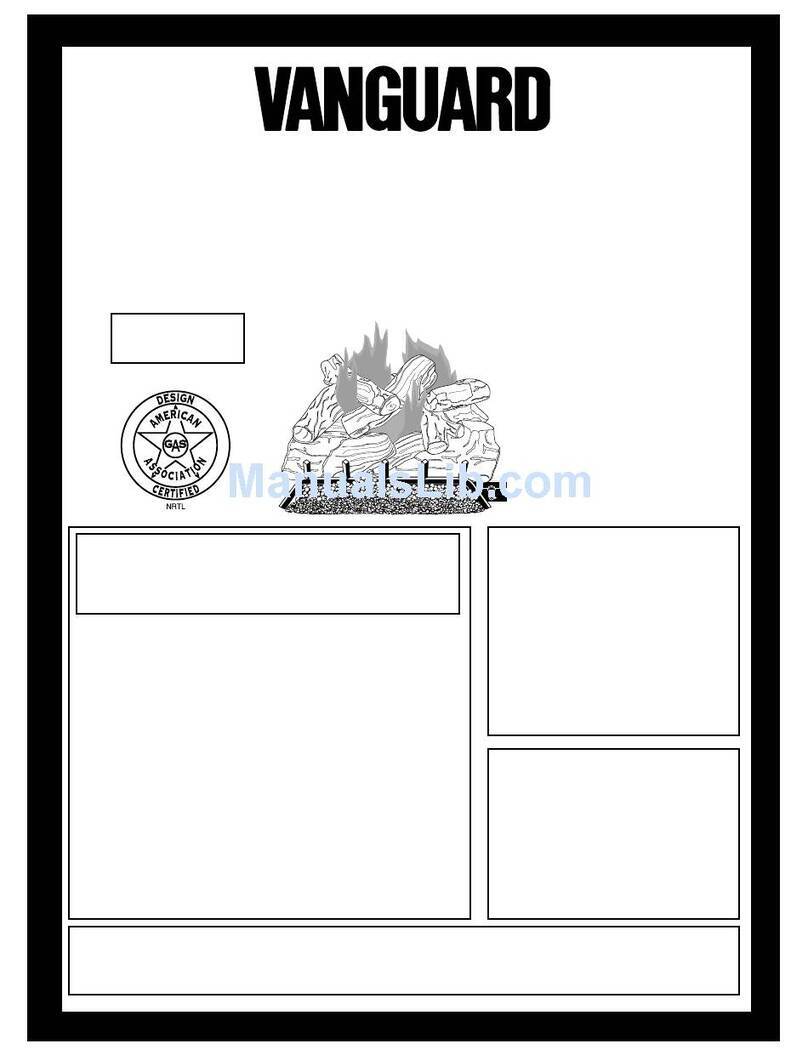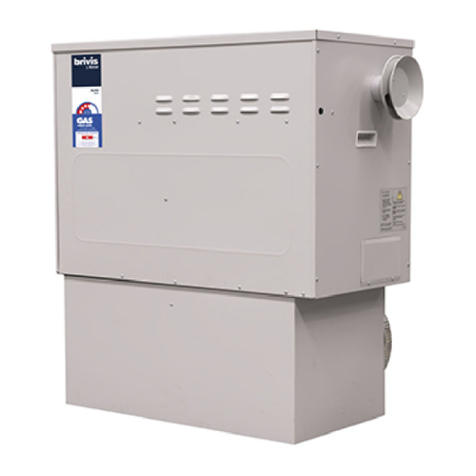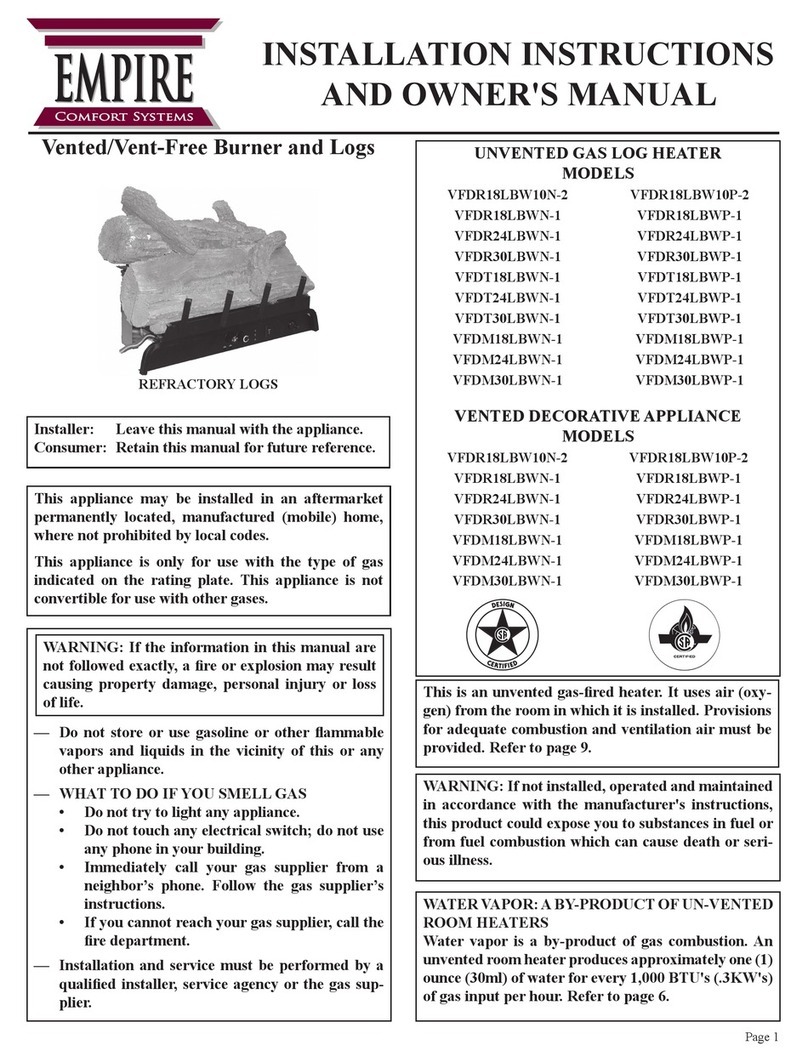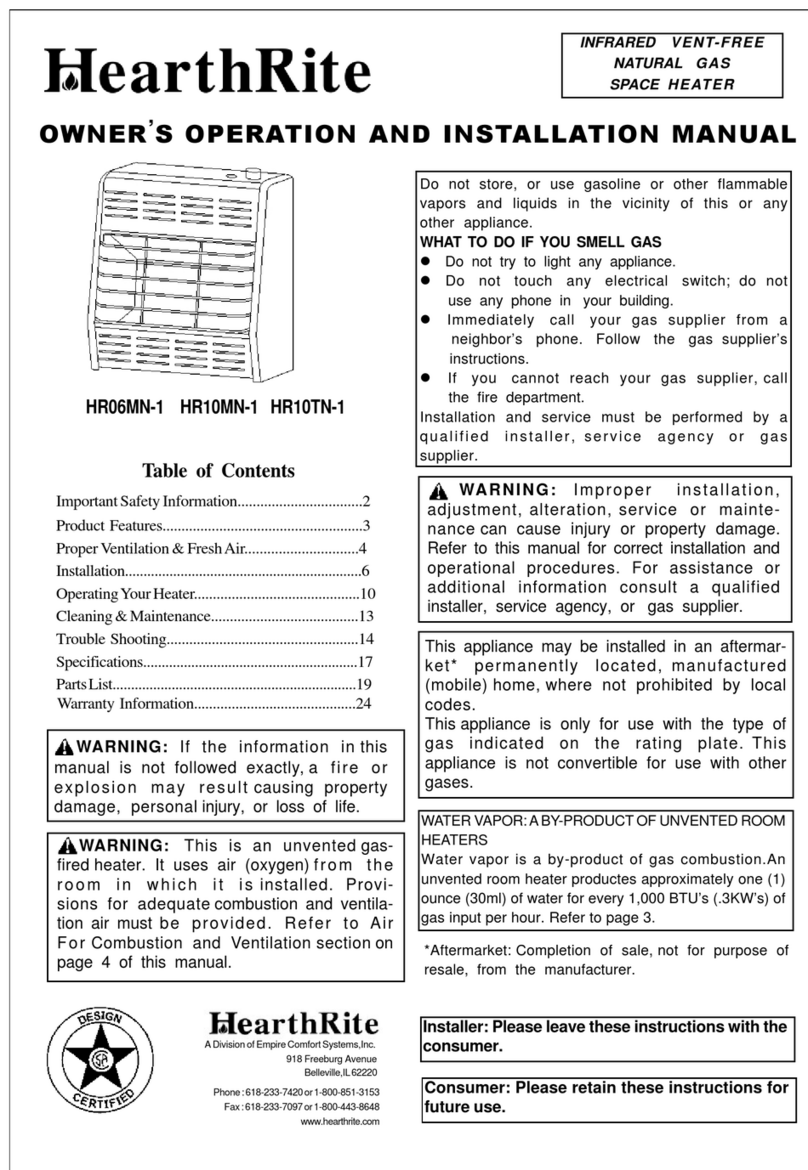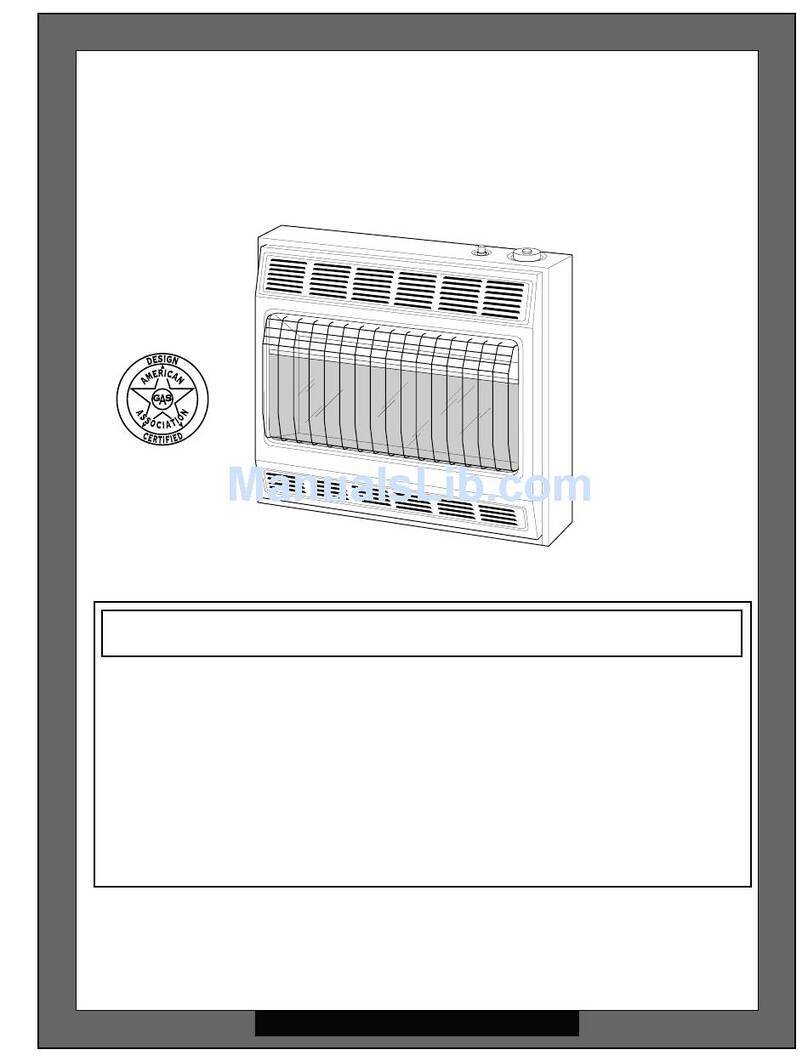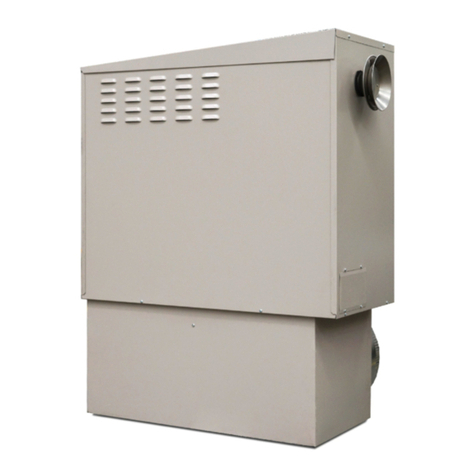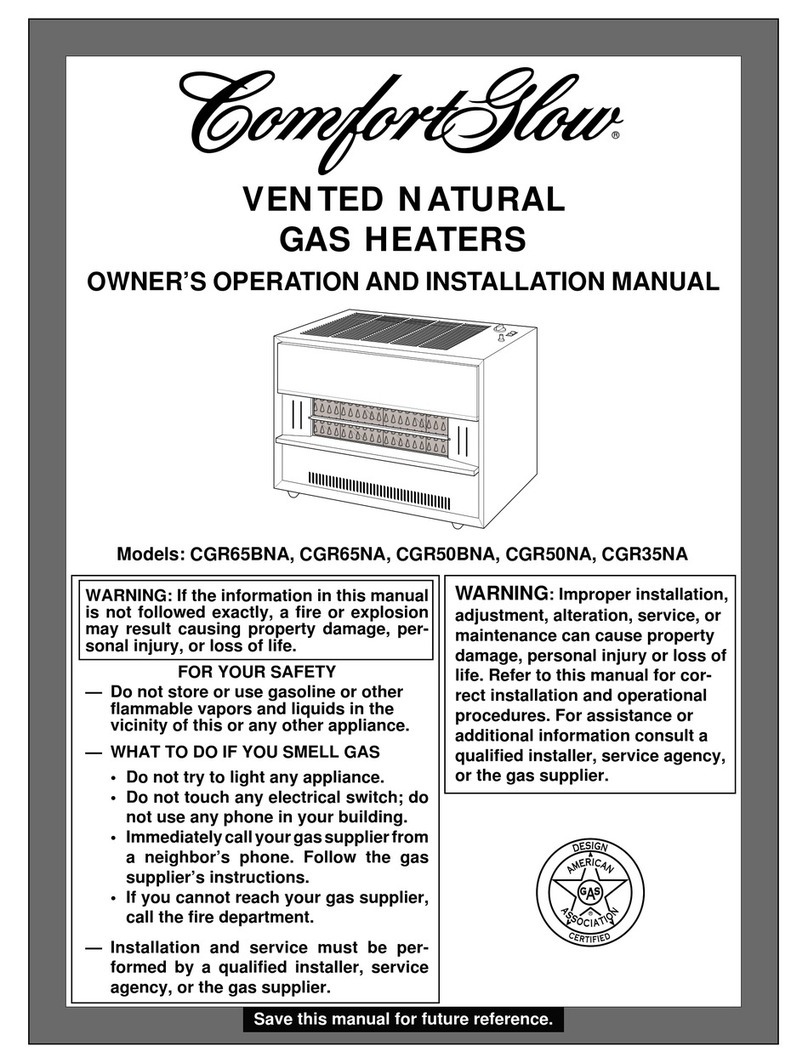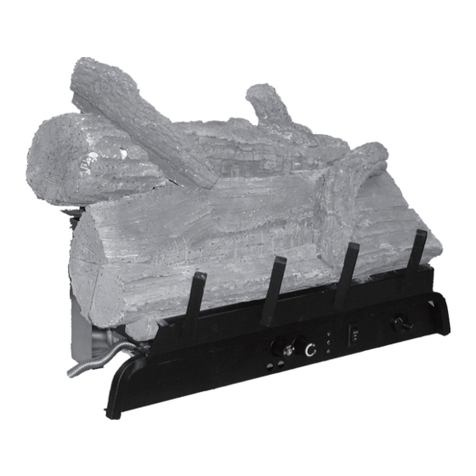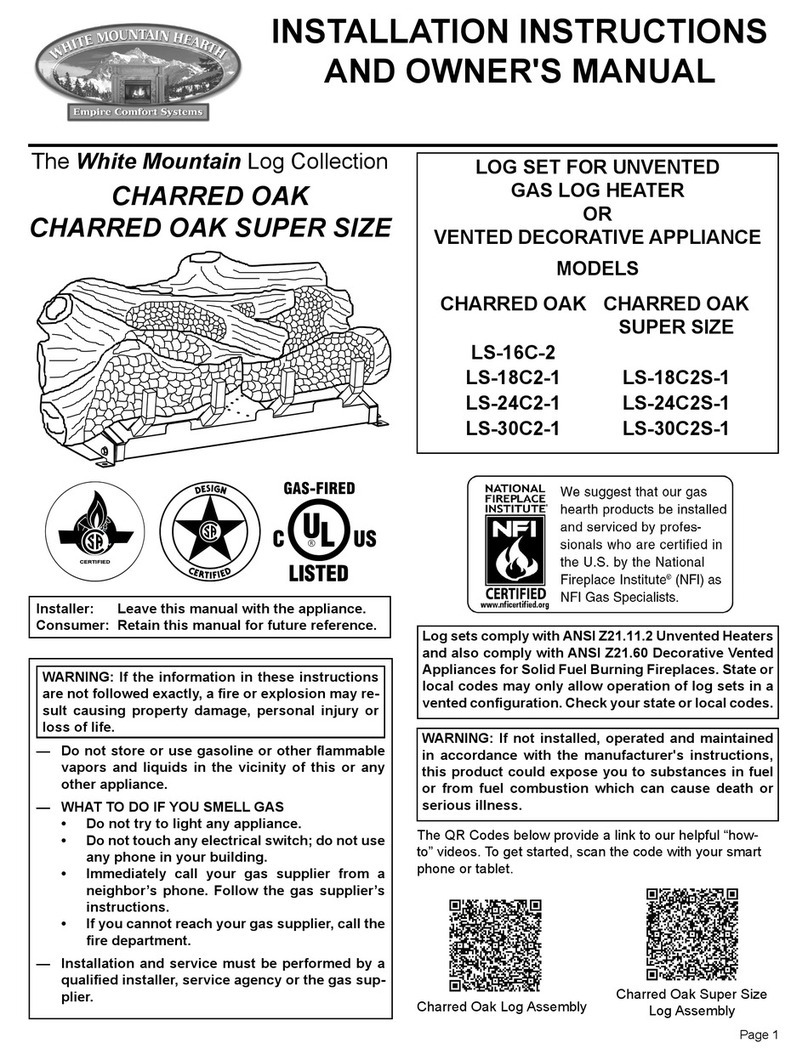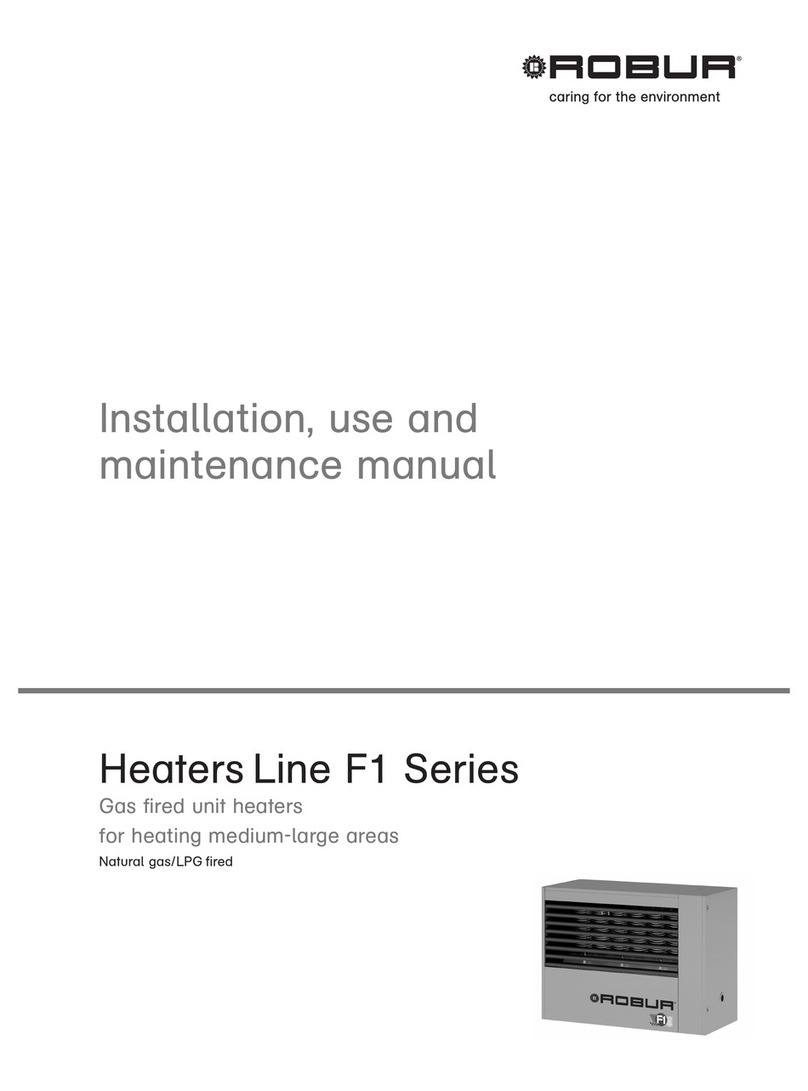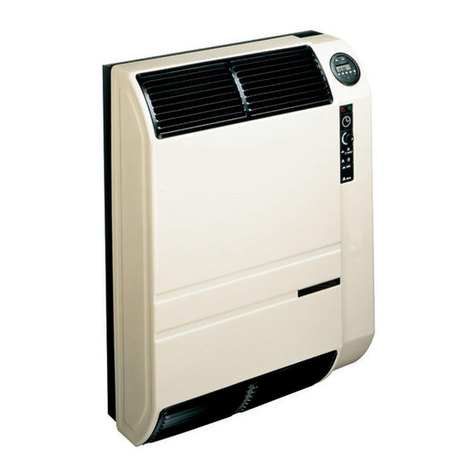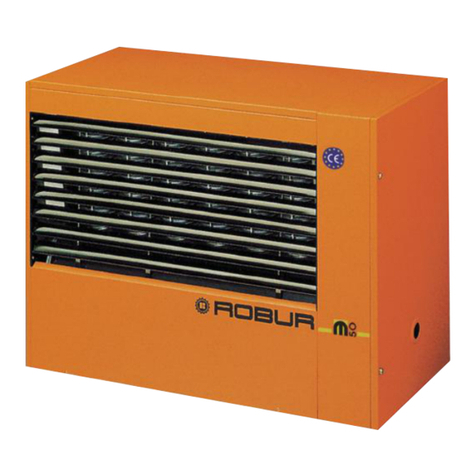as/LPG heaters
3.3.3 SIZING AND INSTALLATION OF COMBUSTION AIR AND EXHAUST GAS PIPES
The Evoluzione series of warm air heaters may be installed in one of the following ways:
- type
B23 installation: in this type, combustion air intake occurs inside the room, while exhaust gas outlet
takes place outside, via a special pipe, that may be either horizontal or vertical. In this type of installation,
the appliance is not sealed off from the room (see Figure 7 and Figure 8)
- type
C13 and C
33 installation: the outlet of exhaust gases and intake of combustion air occur outside,
through coaxial or separate pipes, on a wall (for C13 see Figure 9 or Figure 10) or on the roof (for C33 see
Figure 11). In this way the appliance is sealed from the room in which it is installed.
- type C53 installation: the outlet of combustion products and combustion air intake occur through separate
pipes that exit on the outside of the building, on different walls. This type allows wall-based air intake and
exhaust gas outlet far from the appliance, or via the roof (see Figure 12).
- type C63 installation: with this type, exhaust outlet/air intake systems can be created using commercially
available tubes, bends and terminals, on condition that they are approved for this type of appliance. In
addition, pipes with a diameter of more than 80 mm can be used: for example when it is necessary to
create air/exhaust systems of considerable length. With this type, for the calculation of the air/exhaust
system, reference should be made to the data supplied by the pipe manufacturer, as well as to the
composition, flow rate and temperature of the exhaust gases (see Table 2).
In any case, use approved pipes according to the type of installation that is to be carried out. ROBUR S.p.A.
can supply to order rigid pipes, coaxial pipes and approved terminals.
In order to size the pipe system, it is necessary to calculate the total pressure drop generated by the system
itself.
The maximum and minimum admissible total pressure drop depend on the model of appliance (see Table 2).
Table 3 gives the pressure drops, for Ø 80 and Ø 100, for the air pipes and coaxial pipes supplied by ROBUR.
The pressure drops of the external terminals, being extremely small, can be disregarded.
In the design stage, it is necessary to verify that the sum of the pressure drops of the pipe system is higher
than the minimum admissible pressure drop and that it is lower that the maximum admissible pressure drop of
the appliance (see Table 2). The following pages give an example of how to calculate pressure drops.
The maximum lengths of the air pipe and the exhaust gas pipe, in relation to the type of installation carried out,
are given in Table 4. The lengths should be taken as APPROXIMATE, and in the case of standard installations
in which the air pipe and the exhaust gas pipe are routed in a linear fashion as shown in Figure 7, Figure 8,
Figure 9, Figure 10, Figure 11 and Figure 12.
It is ALWAYS necessary to install a condensate separator (see detail D in Figure 8), available as an
accessory (Code O-SCN000).
In the case of installations with horizontal pipes of more than 1 metre in length, in order to prevent drops of
condensate reaching the appliance, it is necessary to install the exhaust gas pipe with a counterslope of 1 or
2 cm for each metre of length.
In addition, for the correct installation of external terminals for outlet of combustion products and intake of
combustion air, follow the indications given in Figure 13.
If the integrated upper mounting bracket is not used, to make connection of the heater and the air/exhaust
gas pipes easier, ROBUR supplies as an accessory an “air/exhaust gas pipe connector kit” (Code O-
SCR010) that includes 2 adaptors Ø 80 with element for drawing exhaust gases/air (see detail C of Figure 8)
and gasket.
NOTE
NOTE
NOTE




















